Affordable and high-quality outdoor WiFi range extenders.
Having the best outdoor WiFi range extender is essential if you want to connect to WiFi outdoors. Such a device is easy to install, offers good speed, and can cover your entire property without hurting the performance.
Since a range extender is meant to be used outside, most such models are provided in a secure waterproof body that ensures your connection stays safe and reliable. Range extenders come with various “modes” and can be used as a router/access point repeater/hotspot, etc.
When choosing the best outdoor WiFi range extender, pay attention to the model’s type, speed, and coating. Learn how easy it is to mount and set up the device, as well as its weather-resistant properties (mainly waterproofing). You should also check the size and weight of the range extender.
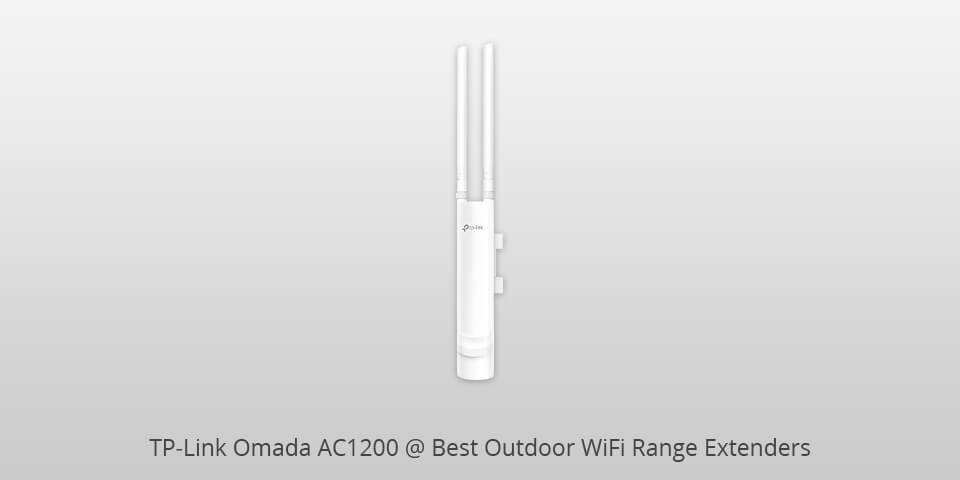
Speed: 1200 Mbps | Coverage: 300 m | Wireless Type: 802.11ac | Weight: 0.3 pounds
If you are looking for the best WiFi connection then theTP-Link Omada AC 1200 is probably one of the most suitable options that you can find. It features a high speed features which enables it to connect to the nearest wireless router.
This makes it possible to remain connected to your favorite websites and even to share files with other people who are on the same network as you are. Another important factor, it provides a large reception range.
This wireless device able to cover a considerable distance without giving you any kind of problems. The wireless cards that come along with this range extender also be capable of transmitting signals to as many as five computers.
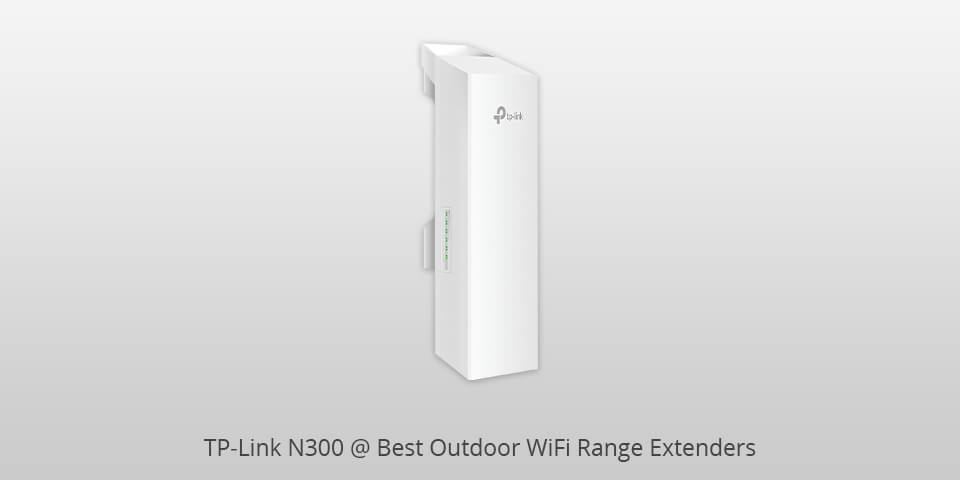
Speed: 300 Mbps | Coverage: 15.000 m | Wireless Type: 802.11ac | Weight: 1.25 pounds
The TP-Link N300 range extender can be used to extend the range of your wireless internet connection indoors or outdoors. It works by mounting onto the wall, which makes it easier to install because there is no need for you to run a cable through your wall.
It also has an outlet on the bottom of the extender which allows you to plug in any devices that are not wireless internet ready directly into the device. This means that you can hook up several devices at once without worrying about wires getting in the way.
Another great thing about the TP-Link N300 extender is that it can be placed on just about any flat surface. This is a great product that will allow you to get a wireless connection with good speed wherever you need it.
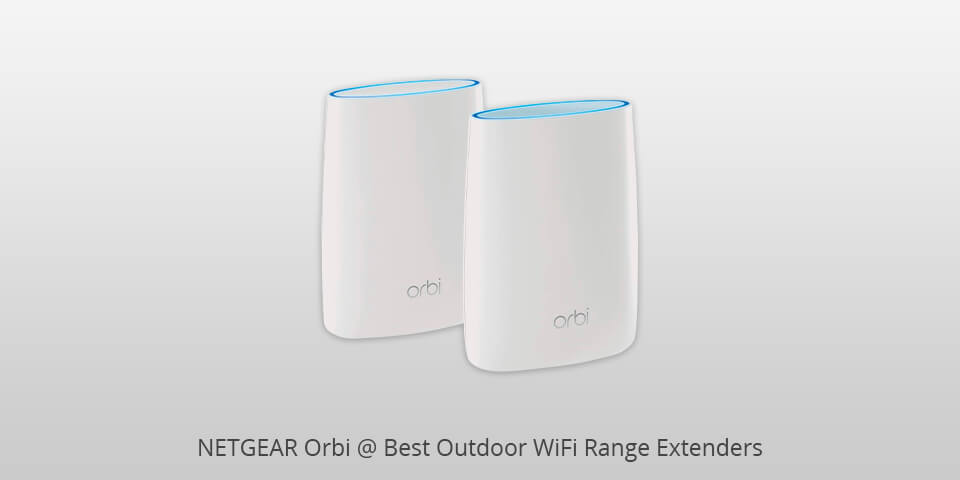
Speed: 3000 Mbps | Coverage: 464 m | Wireless Type: 802.11bgn, 802.11a/g/n/ac | Weight: 3.92 pounds
When it comes to choosing the best wireless router for a big home, the NETGEAR Orbi range extender is a great option. This product is not only the cheapest, but it provides you with the most bandwidth in the least amount of time.
It is made to work as a wireless extender, so it sits behind your existing cable internet connection, extending the wire wherever you need it. Another thing that makes this extender so great is that it is actually very reliable.
Wireless connections are quite susceptible to signal dropouts. This is why the NETGEAR Orbi works so well. As mentioned above, the Orbi can be used as an extender and it extends the signal's range, so your computer always be able to connect to the Internet.
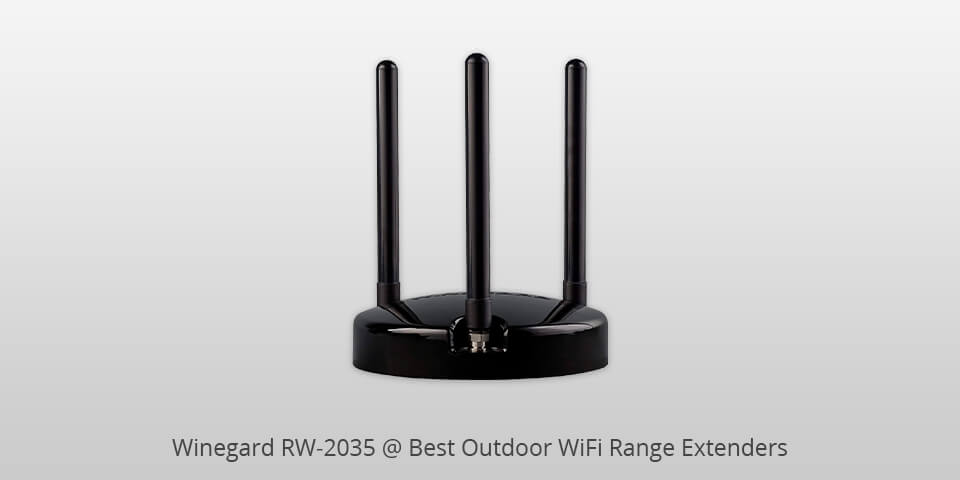
Speed: 125 Mbps | Coverage: 304 m | Wireless Type: 802.11a/b/g/n | Weight: 3.5 pounds
Winegard RW-2035 is good exterior and interior WiFi connection extender. It supports several modern wireless standard such as 802.11a/b/g/n. Winegard RW-2035 is also secure device through which you can safely access the Internet.
This small, lightweight extender can also be used as a wireless access point in your residence or workplace. If you want something that is very slim and unobtrusive, then a Winegard RW-2035 is the one for you.
One of the most important things to note about this extender is that the installation is very simple. There is no complicated wiring to worry about. It comes with the very simple manual that explains everything you need to know in simple English.
| IMAGE | NAME | FEATURES | |
|---|---|---|---|

|
TP-Link Omada AC1200
MU-MIMO
|
CHECK PRICE → | |

|
TP-Link N300
Long range
|
CHECK PRICE → | |

|
NETGEAR Orbi
High speed
|
CHECK PRICE → |
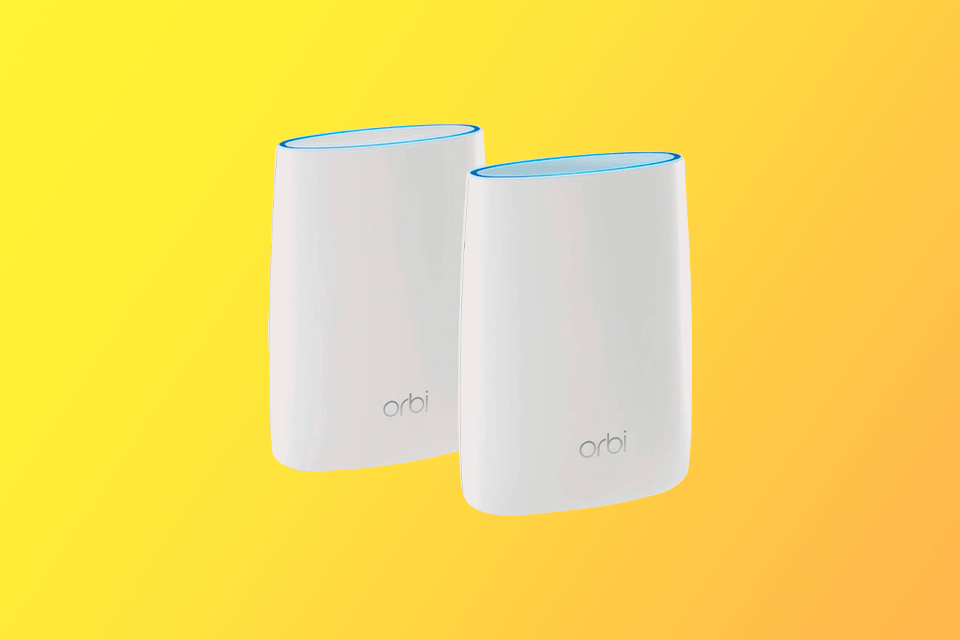
Repeaters can be either single band (only work on the 2.4GHz frequency) or dual-band (support both 2.4GHz and 5GHz). A dual-band range extender can be connected to a router via two bands simultaneously using the 2.4GHz and 5GHz frequencies. Alternatively, you can only connect to the router via 2.4GHz but distribute two WiFi networks: on 2.4GHz and 5GHz frequencies.
Pick a dual-band WiFi range extender since it will allow you to receive a 5GHz network that may offer higher internet speed. Moreover, if you ever decide to replace your current router with a dual-band one, you won't have to buy a new repeater alongside it.
A WiFi range extender can be equipped with one or two Ethernet ports that are needed for connecting to the device with a network cable. For instance, you can connect a desktop PC to the internet or a TV that doesn't have WiFi support since the repeater can distribute the internet not only via WiFi but through a cable as well.
LAN ports can also be used in hotspot mode if the WiFi range extender is connected to the router via cable. The main advantage of this connection type is the increased stability and speed compared to a wireless connection. However, such functionality is only available if the range extender has a “Hotspot” mode, which is thankfully included in most modern devices.

The technical specifications of any range extender include its maximum transfer speed for each included band. For instance, the 2.4GHz (802.11n) frequency can have a speed of up to 300Mbit/sec, while 5GHz (802.11ac) can go up to 867Mbit/sec. This is the maximum theoretical speed. The higher this value, the larger the bandwidth of the range extender, and the faster the actual internet connection speed.
As for LAN ports, most budget devices offer up to 100Mbit/sec ports, while more expensive models come with gigabit ports (u to 1000Mbit/sec).
Antennas that come with WiFi range extenders can be either small or large. Some of them are built into the bodies while others can be a part of a satellite system that requires a bit of work to set up properly. Antennas can be either wireless or wired and usually provide a more stable connection and increased technical proficiency.
That said, the number of antennas doesn’t affect the network coverage area. The fact whether the antennas are external or built-in doesn’t have a noticeable impact as well since the coverage area of the rebroadcasted WiFi network will remain more or less the same across all models.